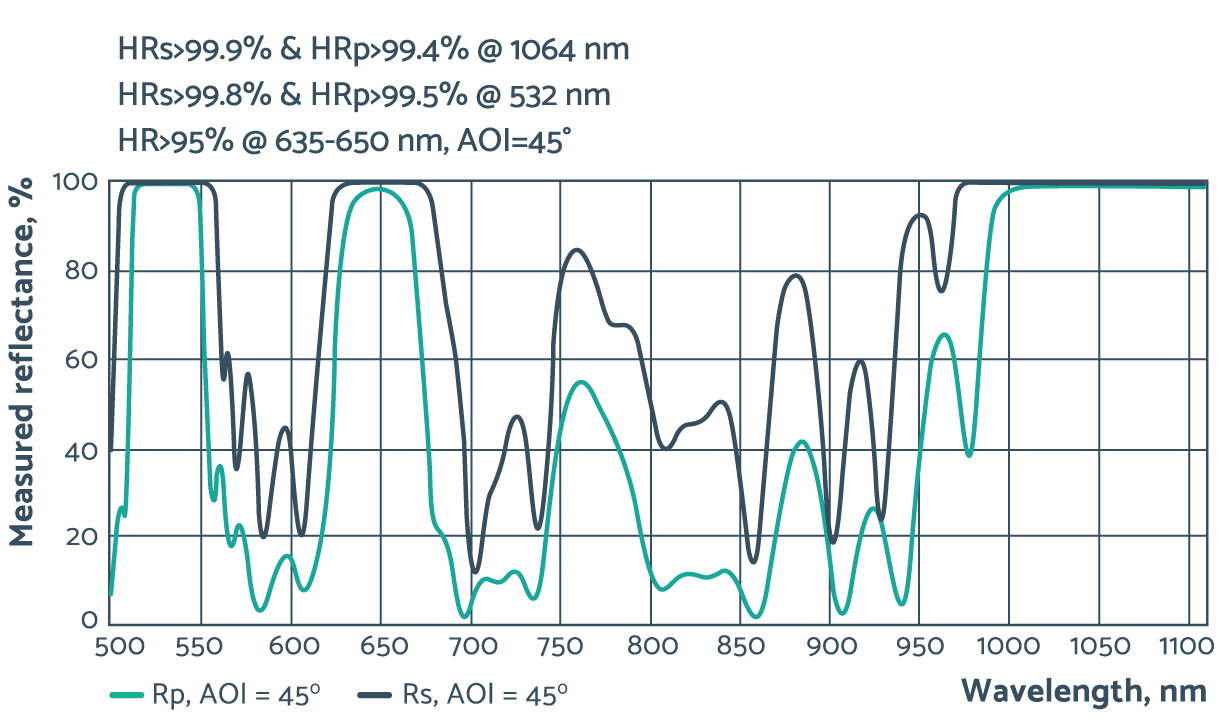Laser Optics for Aesthetic applications
Laser technologies play a significant role in aesthetic applications, such as benign pigmented lesions elimination and tattoo removal, scar treatments, skin rejuvenation, and hair removal.
The process can be boldly treated as a laser processing technique. However, the processed material is biological tissue. Because of the direct exposure to the human body, lasers, and consequently laser optics, must be extremely reliable and repeatable to prevent severe consequences and unexpected laser downtime.
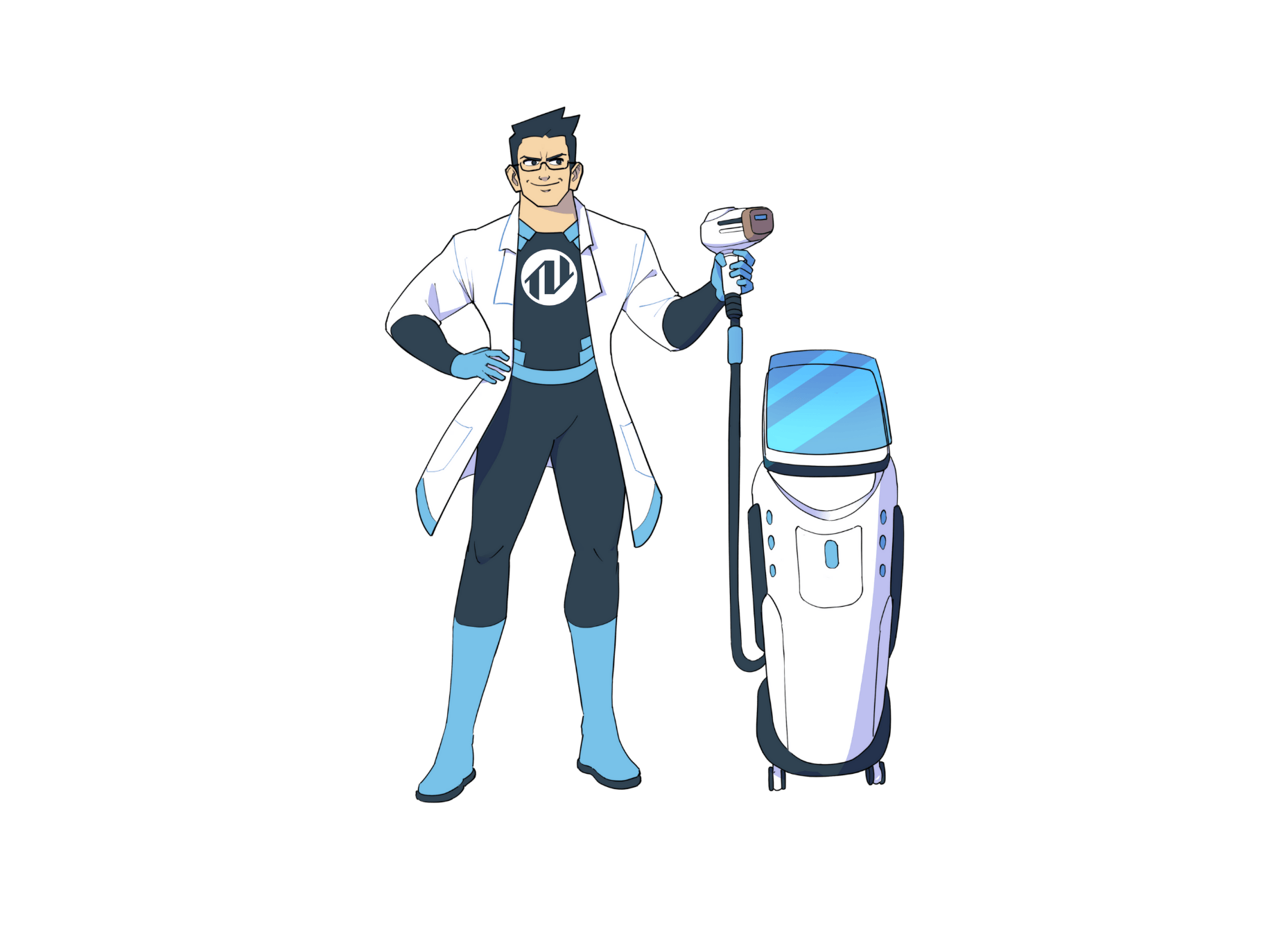
Working solely with Ion Beam Sputtering (IBS) technology and consequently mastering it, we manufacture optics that feature excellent spectral performance, high Laser-Induced Damage Threshold (LIDT), at certain wavelengths even sub-ppm level absorption and 10000+ hours before first downtime, and most importantly – profound precision and reliability. Many aesthetic laser manufacturers trust our products – this segment is our second largest market segment and in 2023 medical laser manufacturers generated 20% of OPTOMAN‘s revenue.
So why are reliable laser optics needed?
- Nd:YAG laser I and II harmonics
- Dye laser
- Diode laser
- Ruby laser
- Alexandrite laser
- Er:YAG laser
OPTOMAN stands out in offering laser optics perfectly suited for these applications. Our optics are designed to optimize the performance and ensure the successful and reliable operation of the laser systems used in aesthetic treatments.
Design example of a mirror for Nd:YAG laser
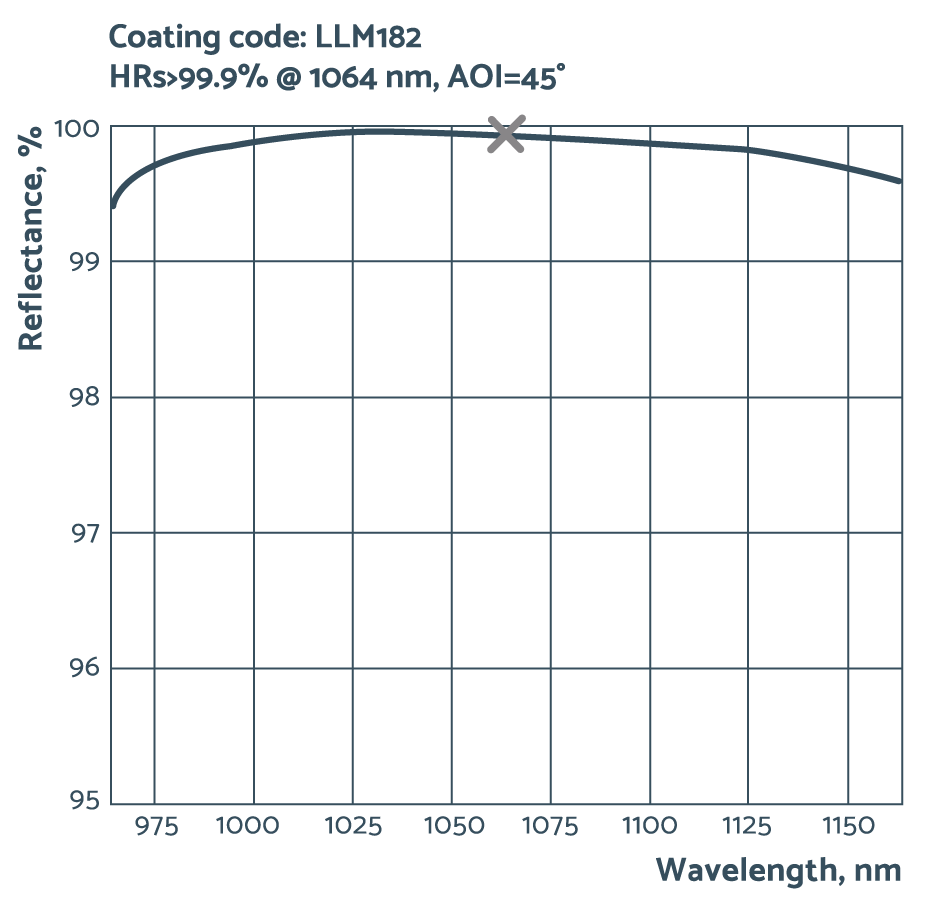
Design example of an anti-reflective coating for Nd:YAG laser

Anti-reflective coating designed for Er:YAG laser.
Absorption <0.2% @ 2940 nm
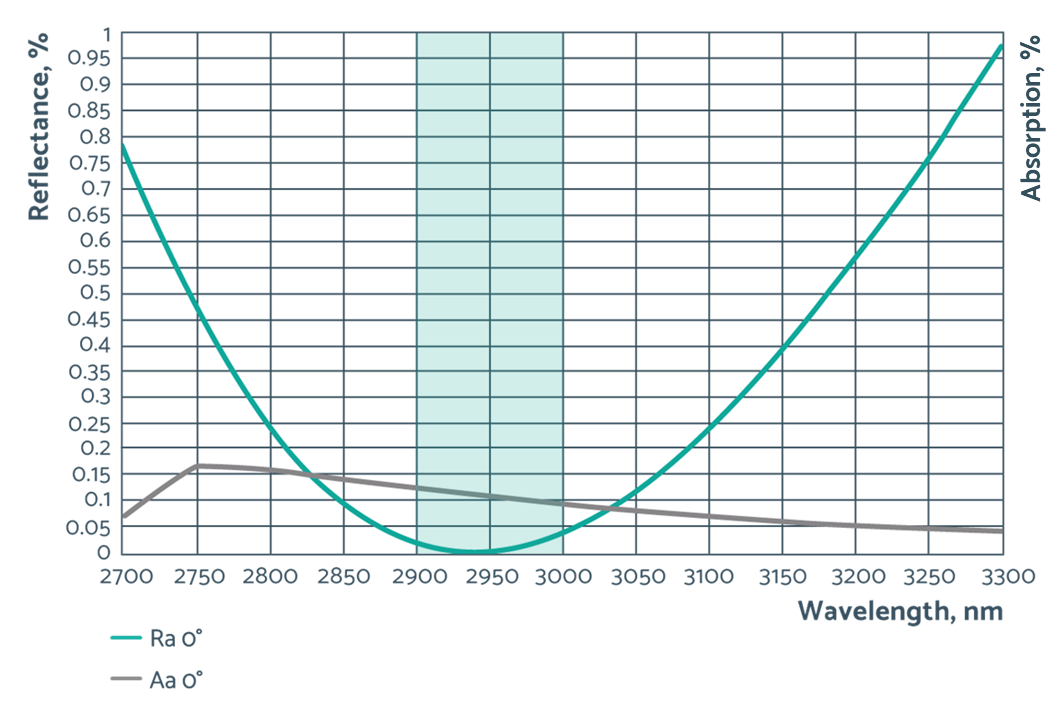
Design example of mirror for Er:YAG laser. This graph represents a new R&D development of OPTOMAN. Our R&D team delved into coating material research and developed the capability of making relatively thin coatings for the Mid-IR region thus significantly reducing the main cost driver – time, which makes them cost-efficient.
Coating (IBS):
Ra > 99% @ 2940 nm, AOI=45°

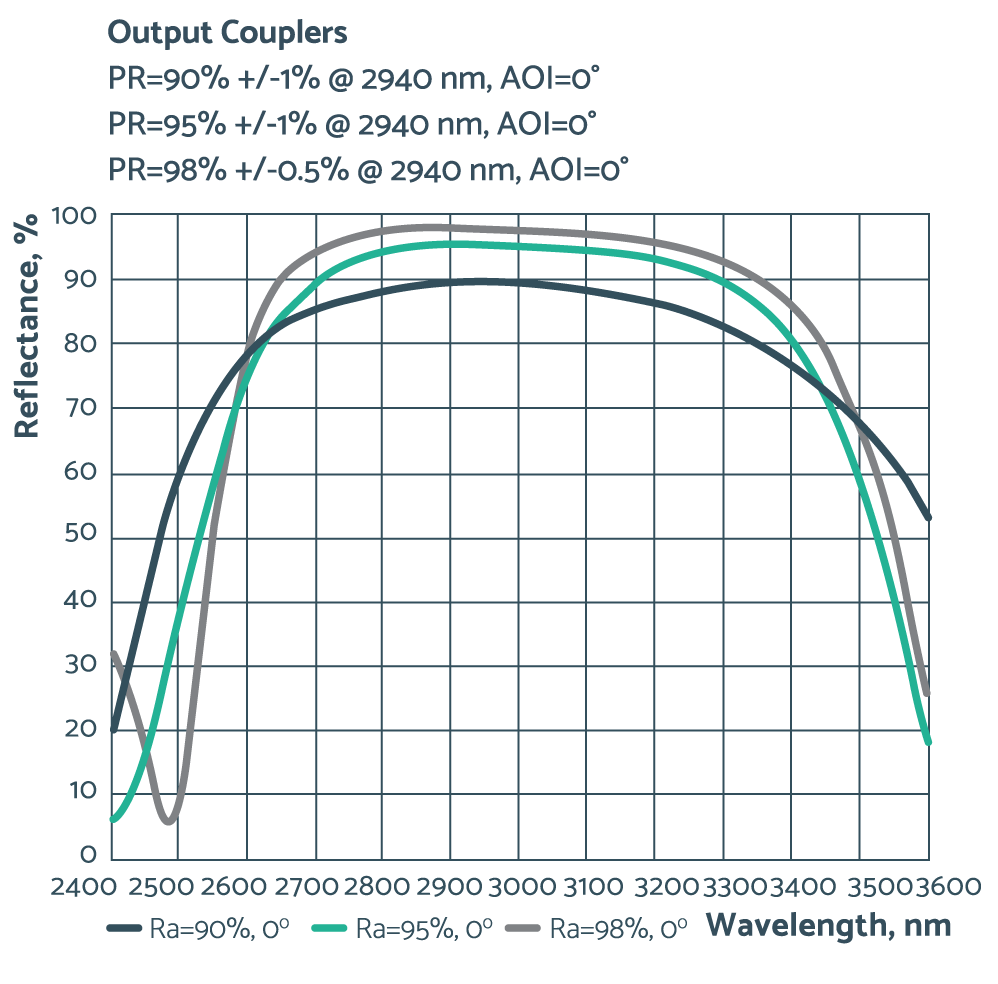
Design example of cavity mirror
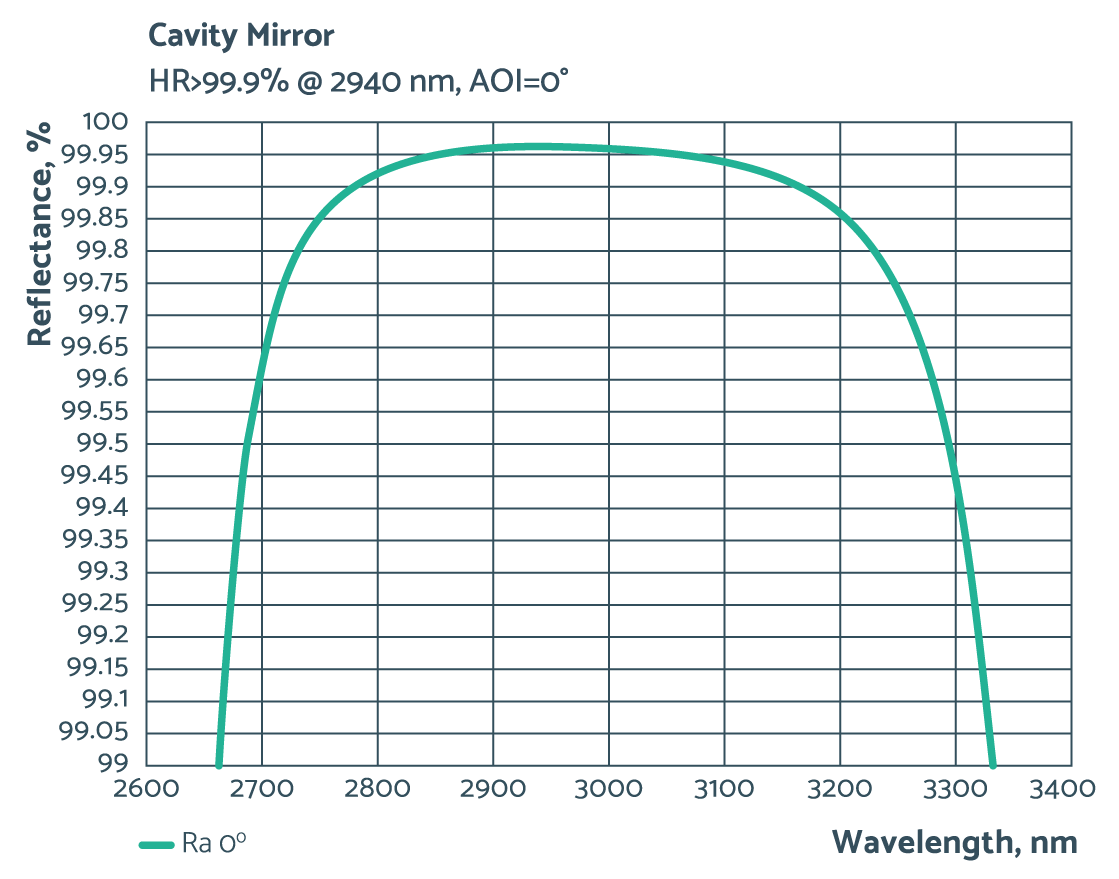
Combiners
The mentioned lasers offer different benefits and are chosen based on the specific needs of the treatment. For some treatments, combinations of these lasers can be used to achieve the desired result.
For example, the alexandrite laser, which emits 755 nm wavelength is very effective for hair removal, while Nd:YAG laser with its 1064nm helps to penetrate deeper into the skin for better results. Similar can be achieved with a ruby (694 nm) and Nd:YAG laser combinations. Another reason for using laser combinations is to accommodate to the type of skin – 1064 nm is more suitable for IV-VI skin types penetration and 694/755 nm is more suitable to penetrating I-III skin types. In these kinds of systems, combiners are used.
To the right is a scheme for a typical combiner.
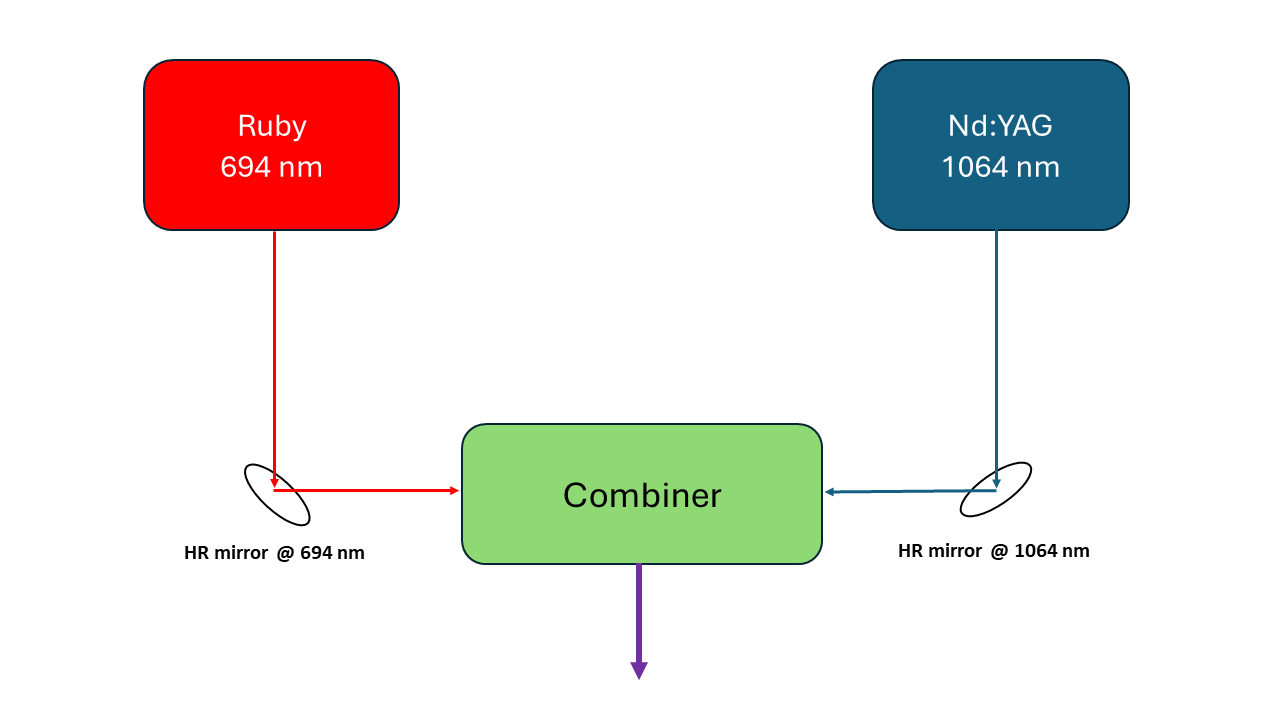
OPTOMAN is capable of manufacturing laser optics specifically designed for this type of systems:
HR > 99.7% @ 694 nm + HT > 99.0% @ 1064 nm + T > 98.0% 532 nm
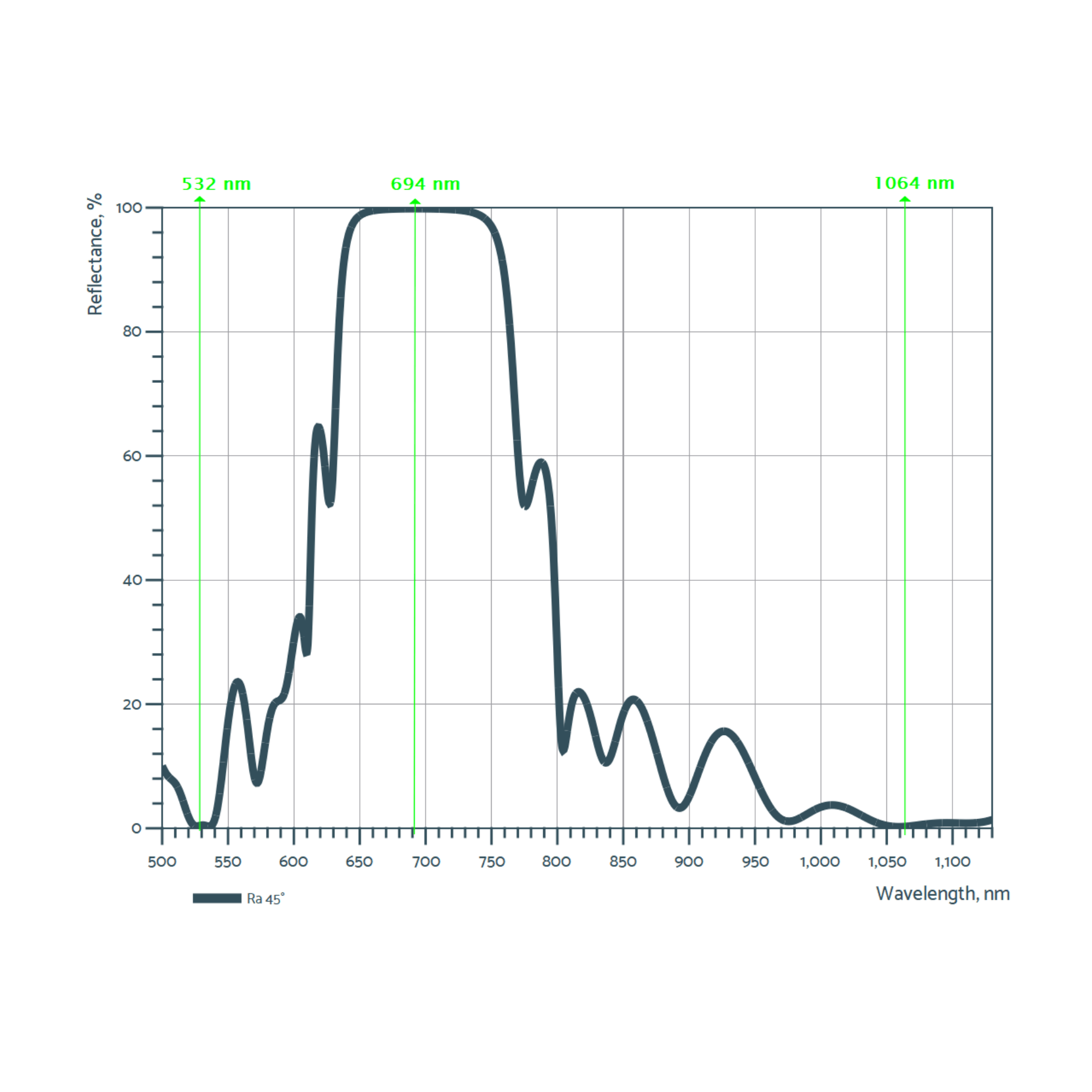
Design example of a mirror optimised for articulated arms. Design example accomodates for both first and second harmonics of an Nd:YAG laser.
